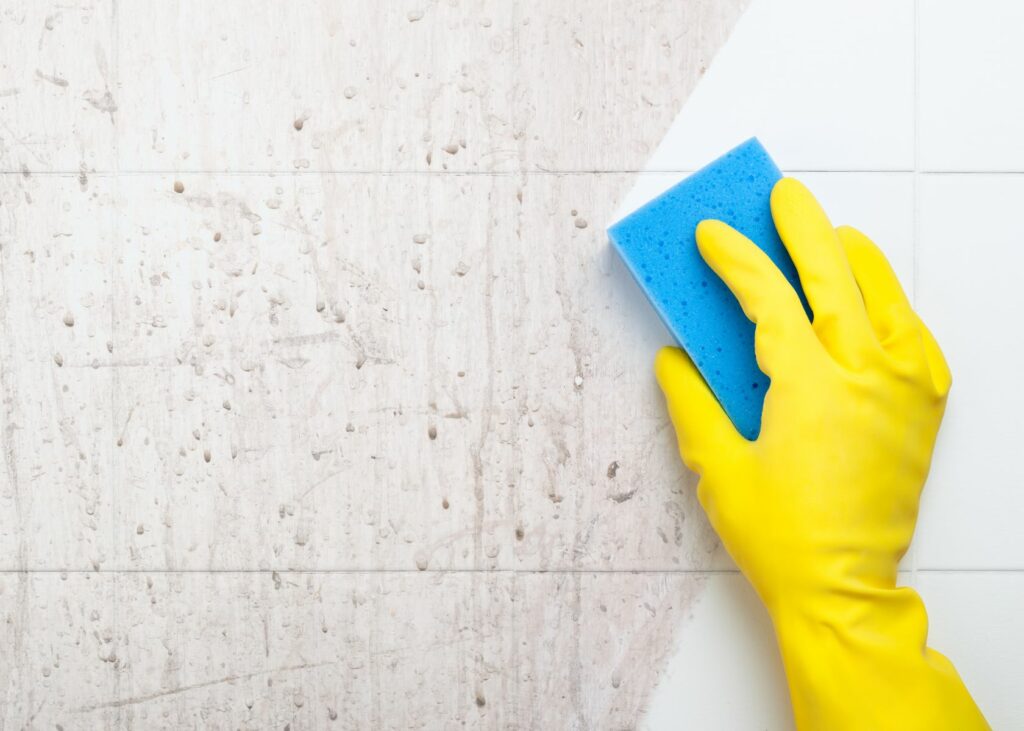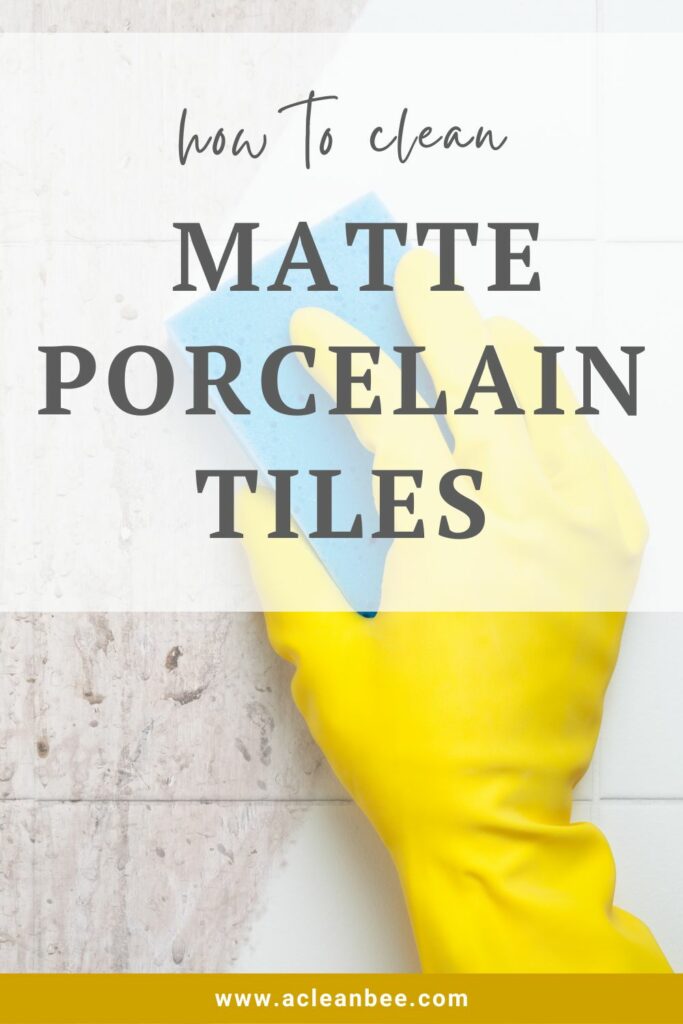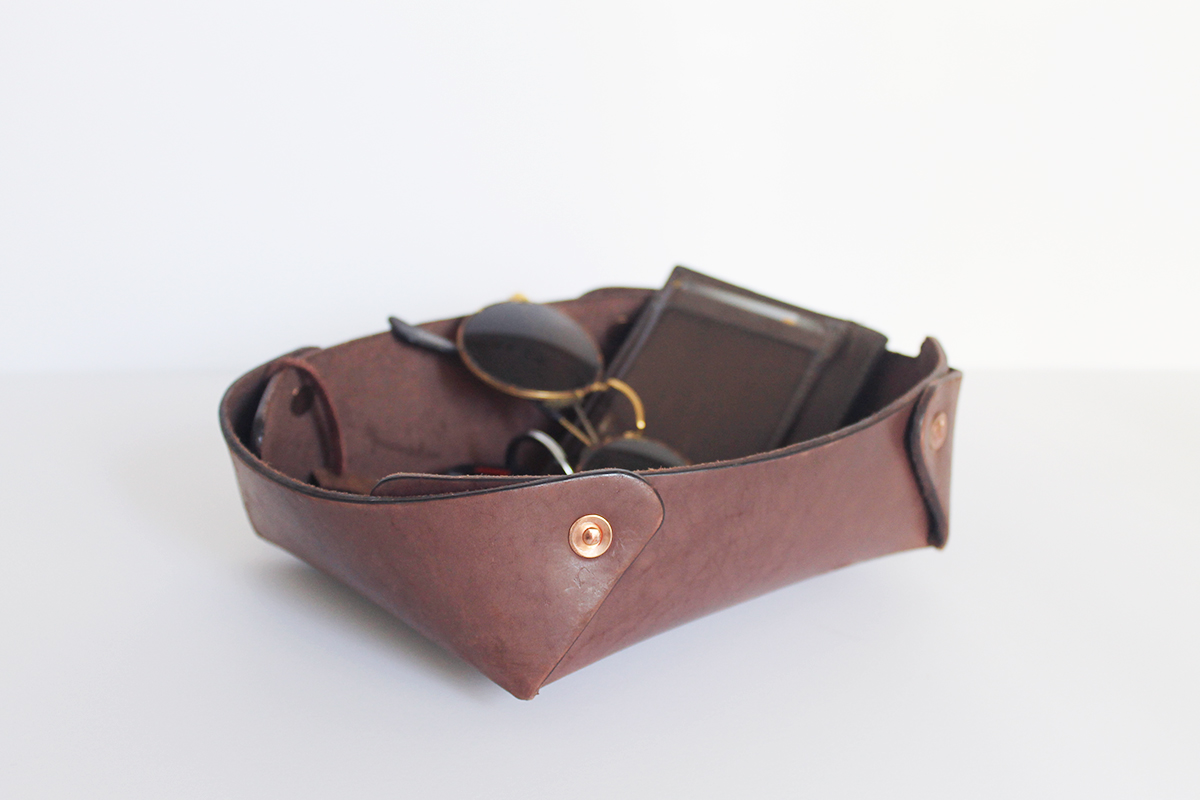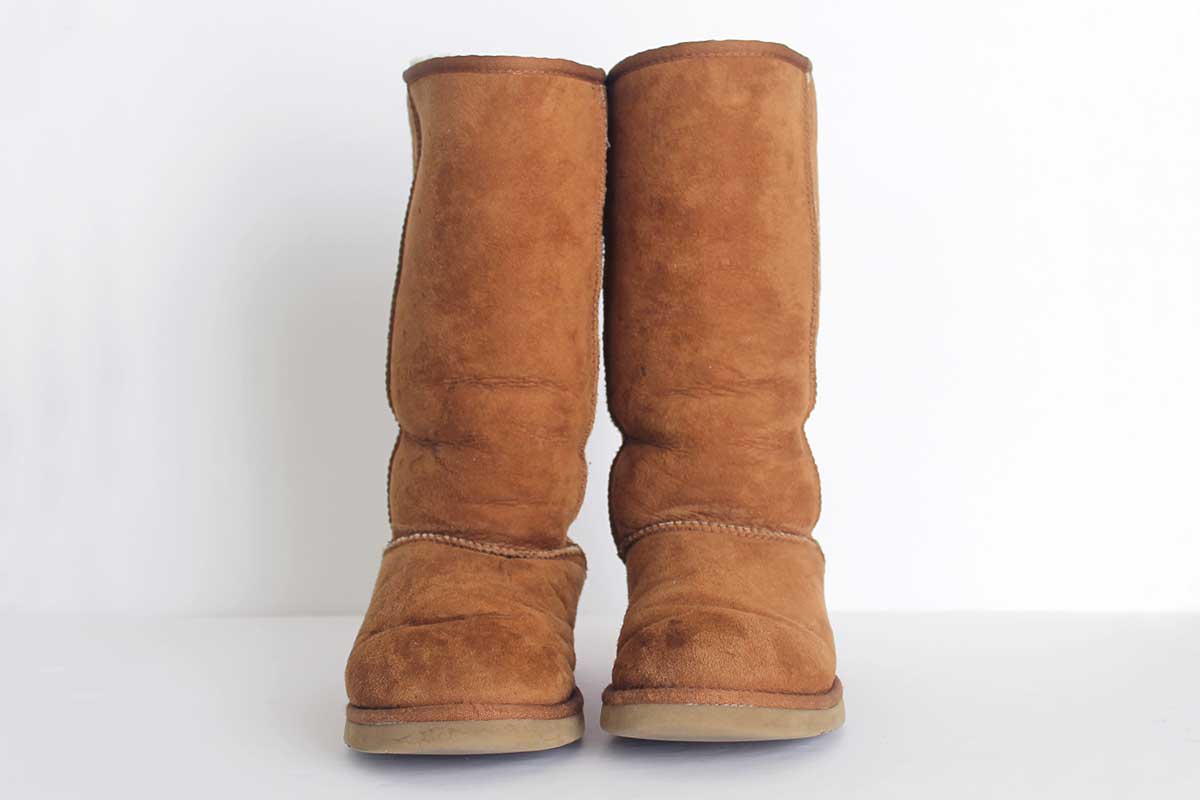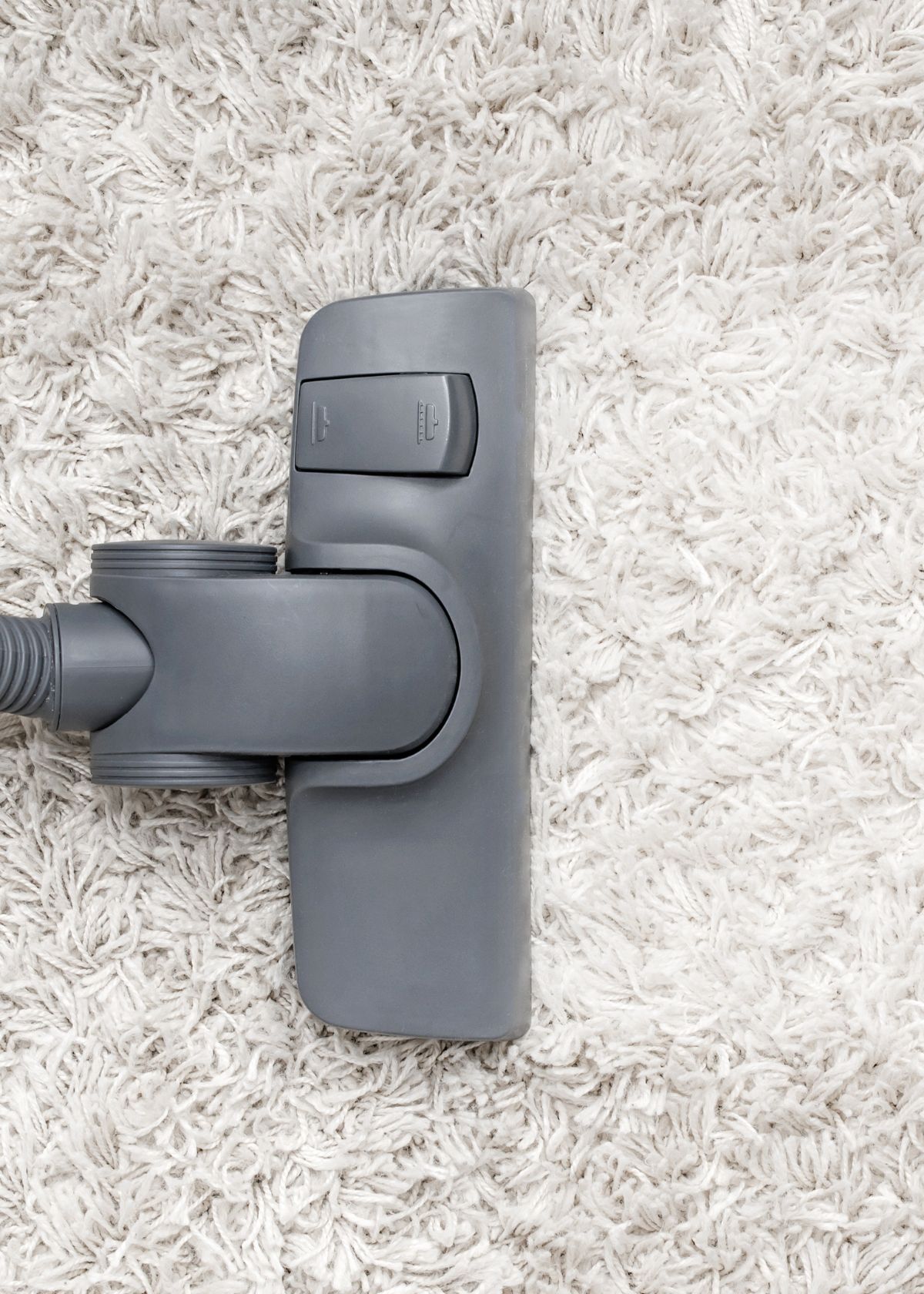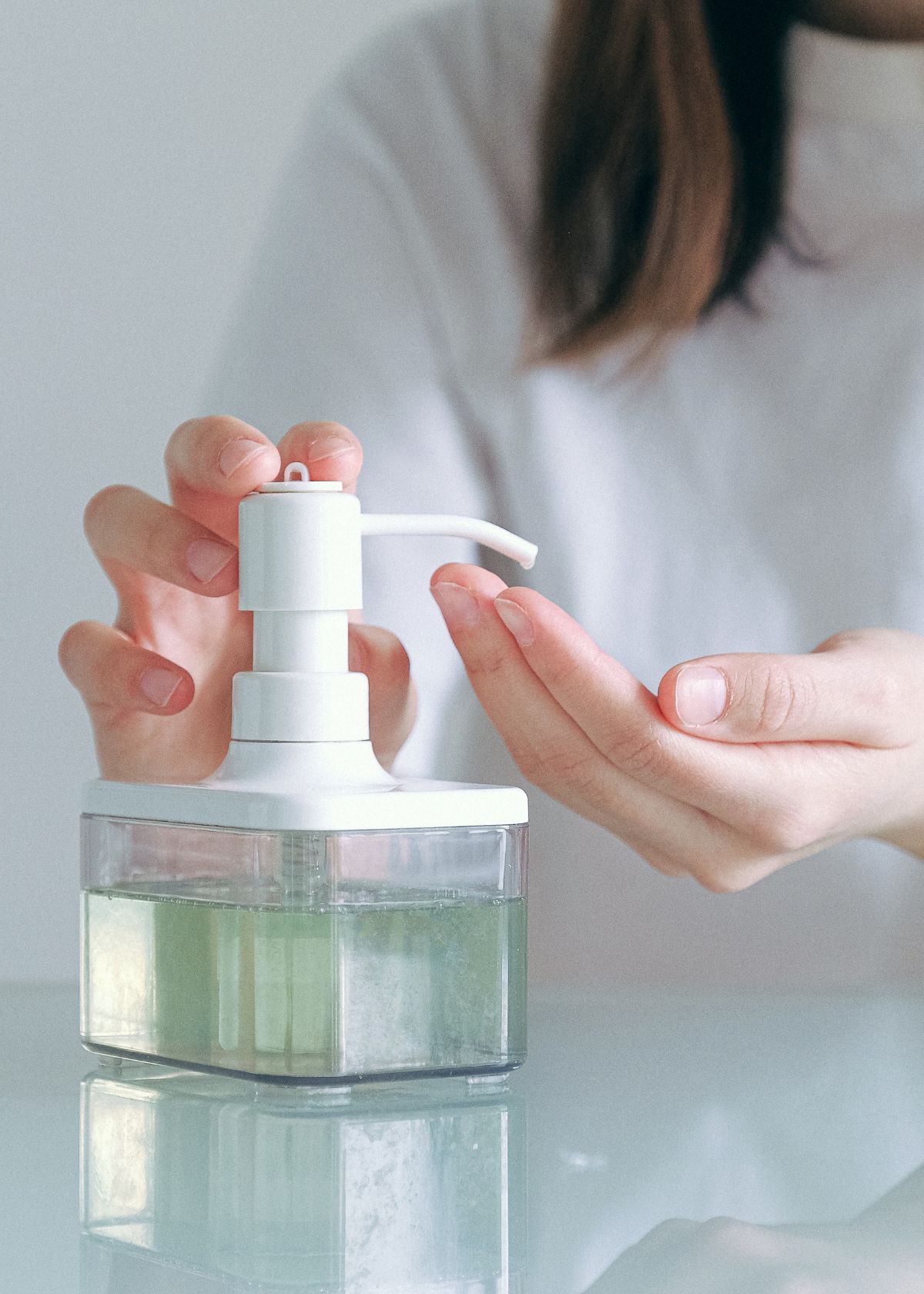How to Clean Matte Porcelain Tiles
Do you have matte finish tile in your home that you’re trying to figure out how to clean?
While you may be able to get away with standard cleaning methods for most tiles, matte porcelain tiles have a few differences that require special cleaning, especially with stubborn stains.
Quick Navigation
Matte Tiles vs. Gloss Tiles
Both matte and gloss tiles can be a beautiful feature in a kitchen or bath. There are a few key differences between the tiles, but one similarity is that both varieties have a clear glaze (either matte or gloss) that gives them their final look.
Matte tiles have a non-reflective or dull surface that may feel slightly textured. Matte tiles are often better at concealing water droplets or stains.
On the other hand, stains that are set can be harder to remove. Since these tiles do not have a gloss enamel-like finish, they can be more susceptible to stains. This is because, due to the finish, stains can absorb into the tile.
In contrast, gloss tiles have a shiny, reflective finish. This finish is often easier to clean as stains wipe right off the hard, enamel-like surface.
Because of this, you’ll often see gloss tiles used for backsplashes or other areas of the home that frequently get dirty.
While gloss tiles are used for flooring at times as well, they can be more slippery than matte tiles.
How to Clean Matte Porcelain Tile by Hand
Matte tiles are simple to clean by hand. Regular cleaning will also make deep cleaning much easier!
Step 1: Prepare a bucket of warm soapy water
Fill a bucket with warm, soapy water. You can use a pre-made cleaning solution or a DIY solution. If you need suggestions on what cleaner to use as a mopping solution, check out our favorite eco-friendly floor cleaners.
Step 2: Clean tile
Clean the tile with a sponge. Or, if you are cleaning tile floors, use a mop instead of a sponge. Make sure not to use too much water.
Step 3: Dry tile
Dry the tile so that water does not sit and accumulate on the tile. Some matte tiles may be more porous than others.
How to Clean Matte Porcelain Tiles using a Tile Cleaning Machine
Alternatively, use a tile cleaning machine. For example, a steam tile cleaner could effectively clean AND sanitize.
If you use a tile cleaning machine, follow the manufacturer’s directions for the type of tile cleaning machine you use.
Some machines require a cleaning solution to be added, while others do not.
Additionally, it’s always a good idea to test the machine in an inconspicuous spot on your tile first to make sure that your tile cleaning machine will not damage your particular tile.
How to Remove Hard Water Stains from Matte Tiles
The minerals from hard water can build up on the tile and turn into a gray/white film. This is especially noticeable on darker tiles — for example, those black hexagonal tiles that have been very popular in bathrooms.
Step 1: Soak a sponge with vinegar
Soak a sponge with household vinegar.
Note: Make sure you have sealed grout for this method and that you have porcelain or ceramic floors. Do not use this approach if you have natural stone floors (travertine and marble). It can cause etching. Use a natural stone cleaner for these materials.
Step 2: Apply vinegar to the tile
Wipe and gently scrub the tile with your vinegar-soaked sponge, concentrating on stained areas. Soak problem areas, if necessary, by laying a vinegar-soaked cloth on the stain.
Step 3: Rinse clean
Rinse and wipe the tile clean with water and a cleaning cloth.
Step 4: Dry tile
Dry the tiles with a soft cloth so they don’t remain wet.
Removing Rust Stains from Matte Tiles
Rust stains can leave an unsightly orange stain. This can sometimes happen in showers with tile in them. Daily cleaning may help, but once the stain is set, you’ll need a cleaning solution mixed specifically to take care of the rust stain.
Step 1: Create your cleaning mixture
Mix equal parts lemon juice and borax in a small container.
Step 2: Apply the paste to the tile
Apply the paste to the tile using a sponge or soft brush.
Step 3: Allow the paste to work
Give the paste a few minutes to dry and do its magic. Depending on the stain, apply some elbow grease after the paste has been allowed to work.
Step 4: Rinse clean
Rinse the tile clean with water and a cleaning cloth.
Step 5: Dry tile
Dry the tiles with a soft cloth so they don’t remain wet.
Step 6: Repeat (optional)
Repeat the process as needed.
Ingredients to Avoid When Cleaning Matte Porcelain Tiles
When cleaning matte porcelain tiles, it’s important to avoid certain ingredients that can potentially damage the surface or leave residue. Here are some ingredients to avoid:
- Abrasive Cleaners: Avoid physically abrasive cleaning products or tools like scouring pads, steel wool, or harsh brushes. These can scratch and damage the matte finish of the tiles.
- Bleach or Ammonia: Avoid using bleach or ammonia-based cleaners on matte tiles. These substances can discolor or damage the grout lines and may affect the color or finish of the tiles.
- Oil-based or Wax-based Cleaners: Oil-based or wax-based cleaners can leave a residue or film on matte tiles, making them appear dull or attracting more dirt. It’s best to use non-oil-based cleaners specifically designed for tile surfaces.
You may also want to reserve your use of vinegar cleaners for deep cleaning. For regular ongoing cleaning, you can use a gentle everyday cleaning solution.
FAQs
Sometimes matte tile can appear dirty even after scrubbing – I’ve been there, especially with older tiles. There are a few reasons why this may be the case.
The dirty appearance may be caused by stained grout since grout is porous and requires deep cleaning and resealing.
Another reason may be lower quality tiles or tiles that have been improperly cared for in the past and have been etched after the use of harsh cleaners.
The last reason may be residue build-up. For example, hard water can build up, causing stains.
No, matte porcelain tiles do not require sealing most of the time. The matte finish is a glazed finish, so they are ready to go without sealing.
Final Thoughts on Cleaning Matte Porcelain Tiles
Whether you have matte porcelain tiles by choice or you’ve inherited them like I have, taking care of them through regular and deep cleaning will keep them looking good for years to come.

